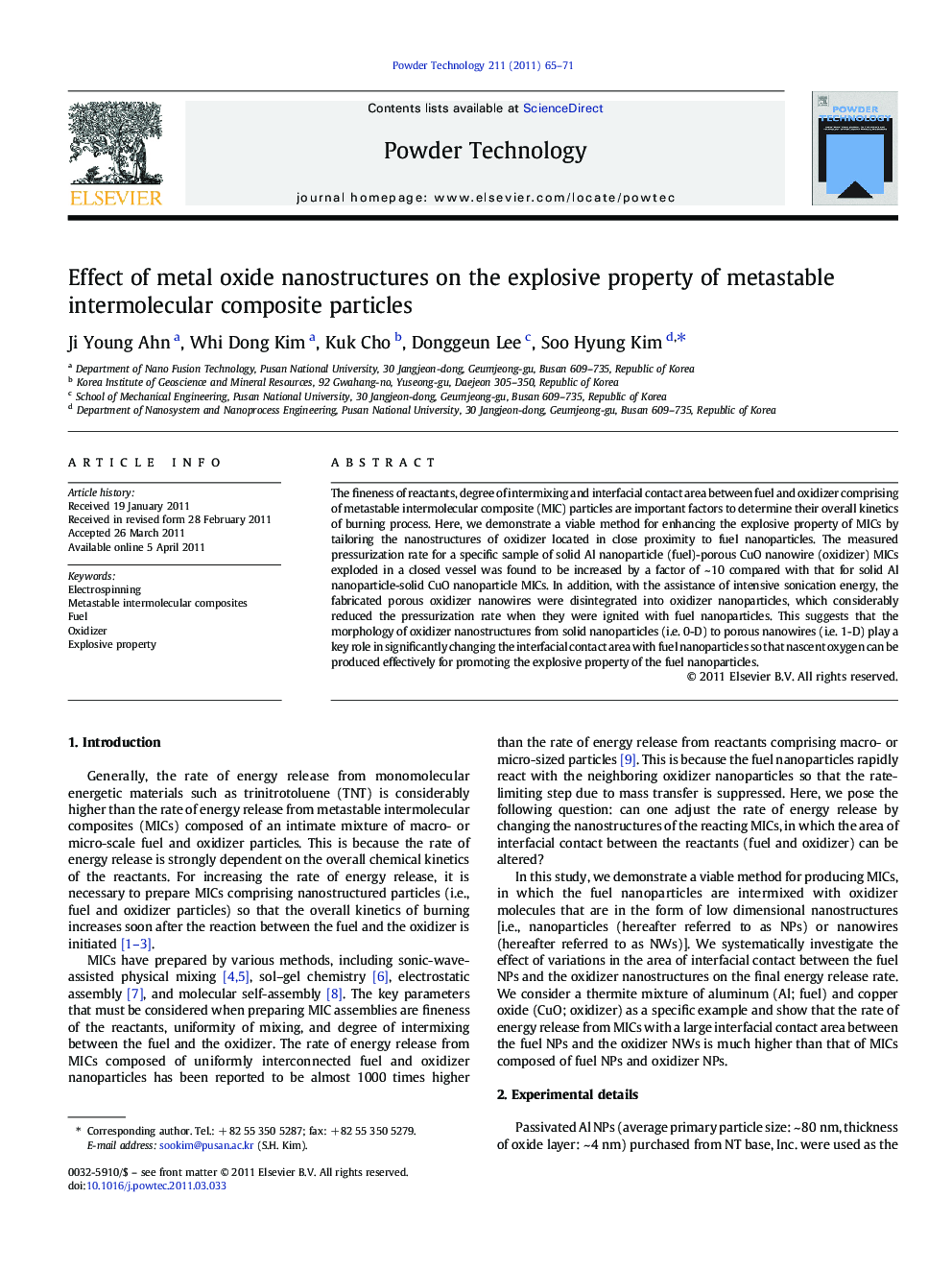| Article ID | Journal | Published Year | Pages | File Type |
|---|---|---|---|---|
| 237547 | Powder Technology | 2011 | 7 Pages |
The fineness of reactants, degree of intermixing and interfacial contact area between fuel and oxidizer comprising of metastable intermolecular composite (MIC) particles are important factors to determine their overall kinetics of burning process. Here, we demonstrate a viable method for enhancing the explosive property of MICs by tailoring the nanostructures of oxidizer located in close proximity to fuel nanoparticles. The measured pressurization rate for a specific sample of solid Al nanoparticle (fuel)-porous CuO nanowire (oxidizer) MICs exploded in a closed vessel was found to be increased by a factor of ~ 10 compared with that for solid Al nanoparticle-solid CuO nanoparticle MICs. In addition, with the assistance of intensive sonication energy, the fabricated porous oxidizer nanowires were disintegrated into oxidizer nanoparticles, which considerably reduced the pressurization rate when they were ignited with fuel nanoparticles. This suggests that the morphology of oxidizer nanostructures from solid nanoparticles (i.e. 0-D) to porous nanowires (i.e. 1-D) play a key role in significantly changing the interfacial contact area with fuel nanoparticles so that nascent oxygen can be produced effectively for promoting the explosive property of the fuel nanoparticles.
Graphical AbstractThis work demonstrates that metastable intermolecular composite (MIC) particles composed of solid Al nanoparticle(NP) and porous CuO nanowire(NW) significantly enhanced the pressurization rate of Al NP/CuO NP MICs due to the inherent increase of interfacial contact area between fuel and oxidizer so that nascent oxygen can be provided effectively for promoting the explosive property of MICs.Figure optionsDownload full-size imageDownload as PowerPoint slideHighlights► Porous CuO nanowires (NW) were fabricated by the combination of electrospinning and calcination processes. ► The pressurization rate of metastable intermolecular composites (MICs) composed of Al nanoparticles (NP) and porous CuO NW was found to be 2~10 times larger than that of Al NP-CuO NP MICs. ► The nanostructure of oxidizer is one of key factors to promote the explosive property of MICs.
